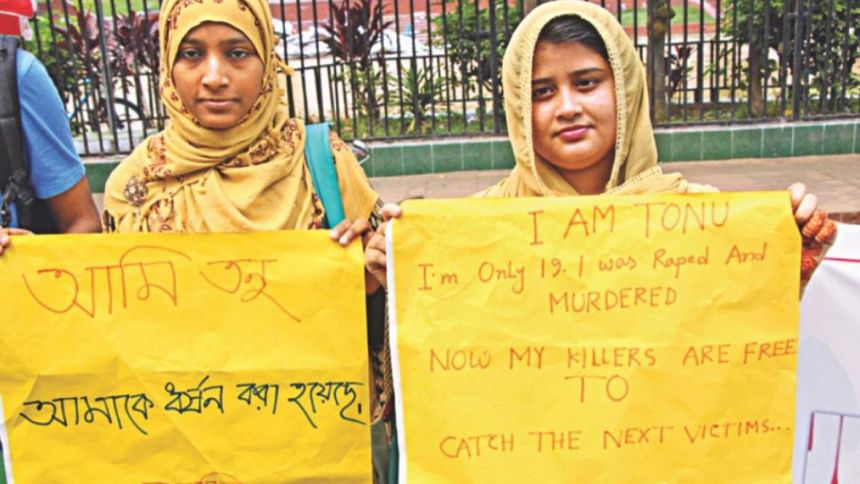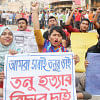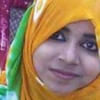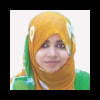She is mine

She could have been ours. She could have been our daughter. She could have been returning home after a dinner, stopped at a traffic signal, dragged out of the car after being surrounded by a group of beasts, and carried off to a quieter spot to be raped and murdered. She could have been our daughter returning from work, unaware of her surrounding, tired of traffic, and walking the last half a kilometre back home, just to be assaulted on the road by goons who would rarely be tried. She could have been our daughter, raped by lust and dumped in the ditch and we would never know how. The body, which is now to be exhumed for fresh autopsy, could have been our daughter's; the stories written on all national and local dailies could have been ours.
Many of us may shudder now, but Tonu really could be our child. All of them could have been ours. While we realise this, we also need to admit that with time, we have all gotten worse. The number of abuses has soared while most of us stand desensitised. Back in 2008, Mahila Parishad had reported that 30 percent of the rape cases are carried out by influential people, 18 percent are by relatives, 31 percent by neighbours, 10 percent by guardians and 11 percent through official quarters. 31 percent of these rape victims were between 11-15 years of age. From 1997-2010, the Legal Aid Department of Bangladesh Mahila Parishad reported 55,995 cases of abuse against women above 14 years of age, out of which, there were 7,232 cases of rape, of which 1,372 women died after being violated and 2,854 were gang raped. According to Odhikar, 338 women and children were raped in a period of nine months in 2012, out of which 68 were gang raped. According to data compiled between 2010 to 2013 from 24 dailies, 8,210 women and 2,273 kids were physically abused, 766 women and 1,674 children were raped; 480 women and 413 children were gang raped; 366 women and 573 children suffered sexual harassment; and 716 women and 132 children suffered from burns inflicted on them, bringing the total number of victimised women to 9,619 and children to 4,704. In September 2014, the number of rape cases was 45 and it doubled the next month (October) to 90. In the last two years (2014 and 2015), almost 4,500 cases of violence per year have been registered with the police. According to Ain-o-Shalish Kendro, 846 women and children were raped in 2015, while the Bangladesh Mahila Parishad reports 1,092 rape incidents, and Bangladesh Shishu Adhikar Forum (BSAF) reports that 199 kids were raped in 2014, and 521 children were raped in 2015. The One Stop Crisis Centre of Dhaka Medical College reports that four to five women are reported to be raped every day, while the 14 units of Women and Child Repression division of the police has recorded 22,291 cases of abuse in 2014 and 21,220 cases in 2015.
A regional study in 2013, conducted by the United Nations based on anonymous interviews with more than 10,000 men aged 18 to 49 years from Bangladesh, China, Cambodia, Indonesia, Sri Lanka and Papua New Guinea revealed that nearly 25 percent men surveyed admitted that they have raped a woman at least once in their life. Ironically, two-third of these men had never faced any legal consequences.
Sadly, we have selective memory. Sadder, in spite of all the data and statistics, reportage and commentaries, is the fact that we don't align with common protests outside our bubble; saddest still is that we move on to the next meaningless moment of the mundane without a trace of memory, regret or tear.
Otherwise, we would have remembered Yasmin from 21 years ago, who was raped by three policemen, and lay exposed in public with her dead body being poked at by policeman before the crowd. Otherwise, we would have remembered the false medical report of Yasmin jumping from the police van, and the subsequent protest raging through Dinajpur, where police fired against the protesters and killed 17 on August 29, 1995. Otherwise, we would have remembered the 14-year old Yasmin riding on a Dhaka-Thakurgaon coach, on her way to see her mother Sharifa, waiting at a bus stop, being picked up by a police patrol van, being violated and left on the highway. Otherwise, we would have all risen by now, just like the city of Dinajpur, which flared up, demanding a fresh autopsy report leading to the arrest of the three policemen two years later, who were then charged with a homicidal case U/S 302/376 of Bangladesh Penal Code and U/S 6(4) of Women and Child Repression (Special Provision) Act, 1995.
The time has come for us to erect a wall in every town of this country to list all the cases of violation and abuse. We need to acknowledge that we ourselves maybe breeding beasts in our wombs. Members of the civil society and public service must work hand in hand today so that we can all address our collective agony together, so that what happened in TSC is not repeated, so that not a single child in a preparatory school is abused, so that a garment worker is not assaulted on a bus ride home, so that our cities are safe. Today, we should all collectively grieve for all our daughters who have left us forever. Today, we might as well all be a part of Tonu, otherwise, history will shame us all.
Today, it is also imperative to recollect that it was the leaders and supporters of Awami League who stood by the case of Yasmin Akhter way back in 1995. With the same party in power today, hopefully, justice for Tonu will not have to wait for two more years. Hopefully, this time around, power will not numb, and instead expedite justice, keeping in mind that it's easy to use tragedy as a political tool but not safe to sit on it for long.
The writer is Managing Director, Mohammadi Group.

 For all latest news, follow The Daily Star's Google News channel.
For all latest news, follow The Daily Star's Google News channel. 







Comments